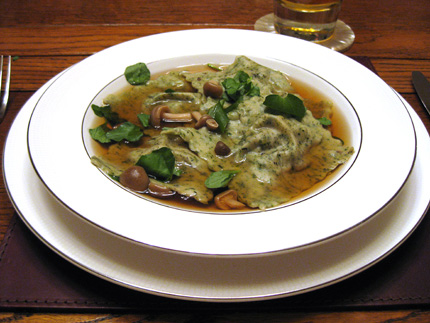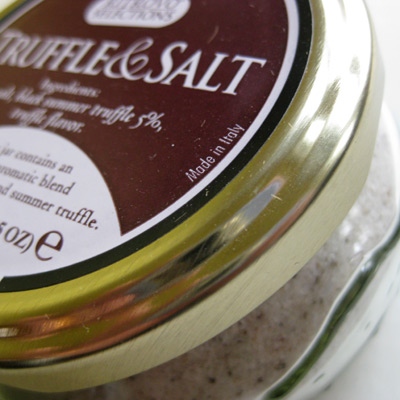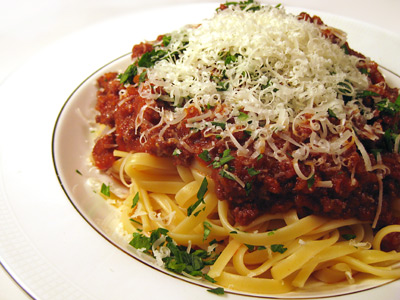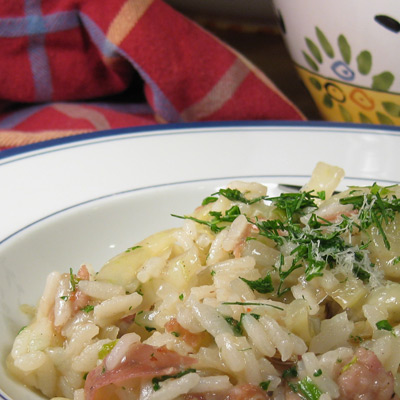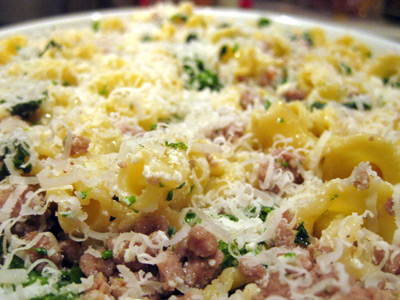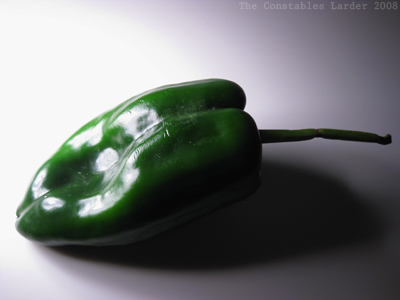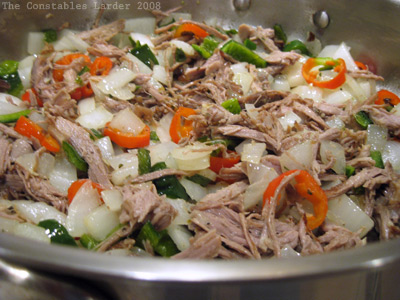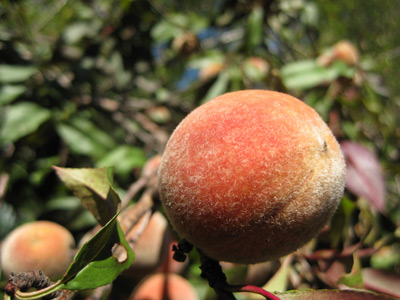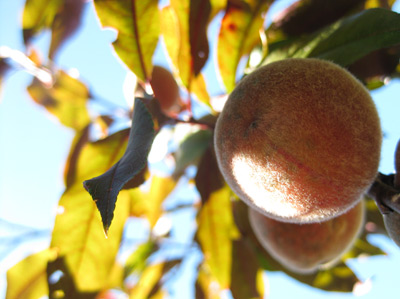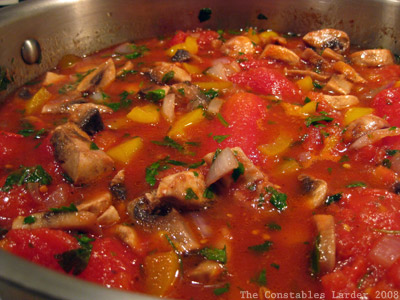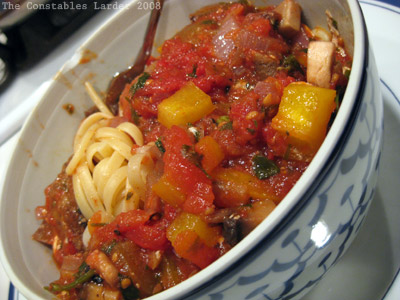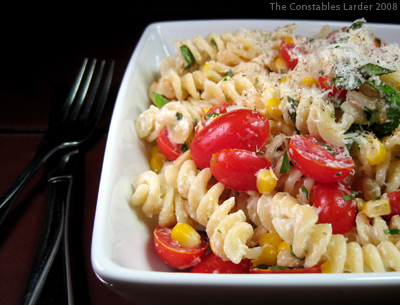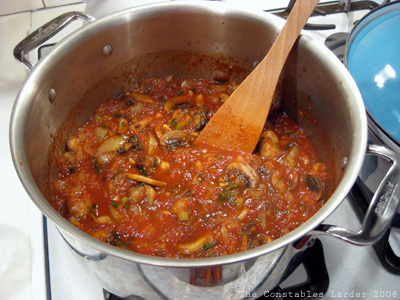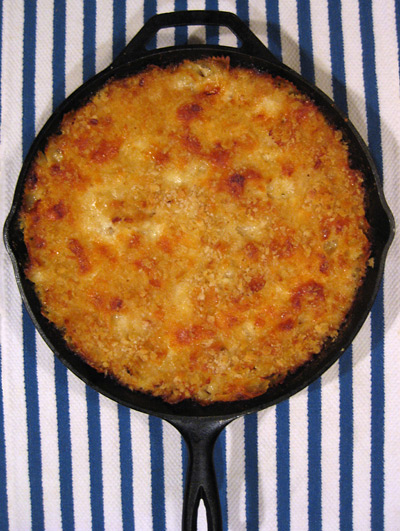
My kitchen is a complete disaster area right now. I’d share a picture but it might short out your monitor. The silver lining is that my first attempt at a vegetarian lasagna was successful (your first, you cry! ah but tis true — normally Lisl is the lasagna champ in this household but she’s on a plane to the UK). And so with no further ado:
Lasagna Components
2 golden zucchini (green zucchini or summer squash would work)
2 red or orange bell peppers
big handful of white button mushrooms
lasagna pasta
basil
parmesan cheese
mozzarella cheese
bechamel sauce (flour, butter, milk – see below)
Tomato Sauce
1 medium yellow or vidalia onion
3 cloves of garlic
14 oz can of skinless, whole tomatoes
olive oil
salt and pepper
cayenne pepper
bay leaf
parsley

Note on above picture: I didn’t end up using the orange pepper or green zucchini
Whip up a tomato sauce: in some olive oil, saute the finely chopped onion on moderate heat, then add the garlic, minced. Add the tomatoes, half a teaspoon of salt, some grindings of pepper, a healthy pinch of cayenne pepper, a bay leaf, and a handful of chopped parsley (I also added a touch of white wine). Do not chop up the tomatoes yet, but rather bring to a boil then let it lightly simmer uncovered for an hour if time permits. Then remove bay leaf and chop and mix the tomatoes with your spatula. Note: you don’t want this sauce to be too watery, or your lasagna will be equally watered down.
Fire up your grill or broiler. Char the peppers on all sides and place in a paper or plastic bag for 10 minutes. Then peel off the skin and remove the seeds and stem.
Thinly slice the zucchini lengthwise, drizzle with olive oil and grill or broil briefly, taking care not to burn.
Thinly slice the mushrooms and saute them in a little butter and olive oil.
Next, create a bechamel sauce (white sauce). I decided to reference a few sources here and amusingly everyone differed. For a single cup of milk: Marcella Hazan used 2 tbsp of butter and 1.5 tbsp of flour; Julia Child used 1 tbsp of butter and 1.5 tbsp of flour; and Mark Bittman was right in the middle, with 1.5 tbsp of butter and 1.5 tbsp of flour.
I ended up going the Hazan route more or less. Heat the milk in a saucepan, with a dash of salt, until it starts to bubble. In another saucepan, melt the butter over low heat and then wisk in the flour. Remove from heat and slowly add in the hot milk, wisking aggressively. Continue to cook over low heat, wisking, if you want to thicken the sauce.
For the construction of the lasagna, I used “oven ready” pasta so I didn’t need to pre-soften but actually I would have preferred the latter since it would have made it easier to cut the pasta to fit my baking dish. I used a smaller but deeper pan than normal because I went multi-layer.
My layers (as best I can remember):
1. thin layer of bechamel, 2. pasta, 3. thin layer of tomato sauce, 4. zucchini, 5. grated parmesan cheese, 6. bechamel sauce, 7. pasta, 8. tomato sauce, 9. basil leaves, 10. bell peppers, 11. sauted mushrooms, 12. pasta, 13. tomato sauce, 14. grated parmesan cheese and torn chunks of mozzarella cheese.
I tend to cook light on salt, but you can always sprinkle a touch of salt and/or pepper on a layer or two as you form the lasagna. When complete, place in the oven for 45 minutes at 350F, or until mozzarella on top starts to brown.
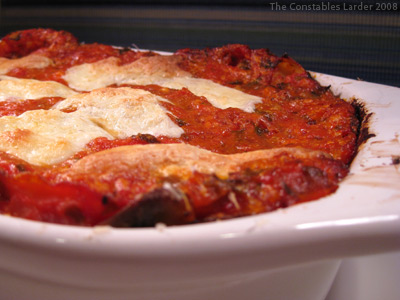
Wish my pictures had come out better…
Strawberries, Basil and Honey

For dessert, I tried a very simple but surprisingly good combination I picked up over at Lucullian Delights, thanks to the Food Blog Search. It doesn’t get much easier than this: cut up your strawberries, chop up some basil, drizzle on some honey, and mix it all together. What’s really interesting is that the basil starts taking on the flavor of cloves.
